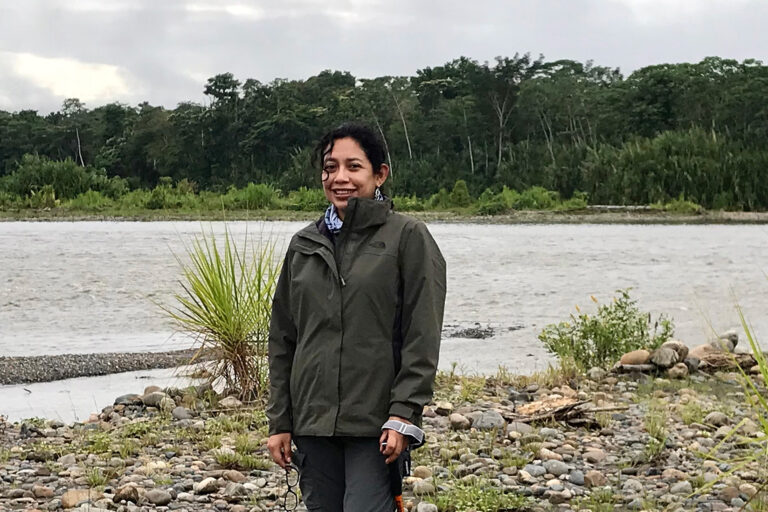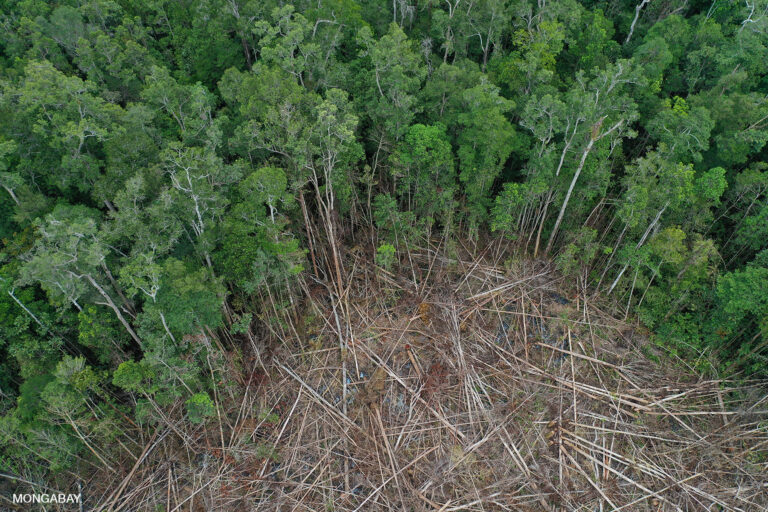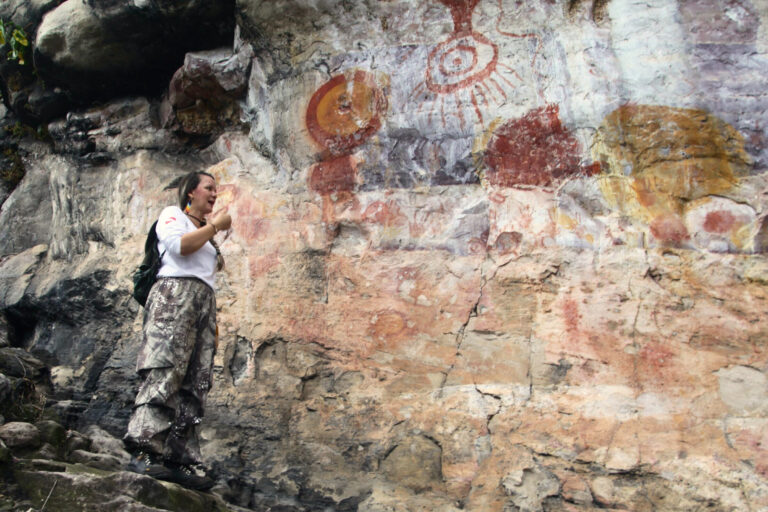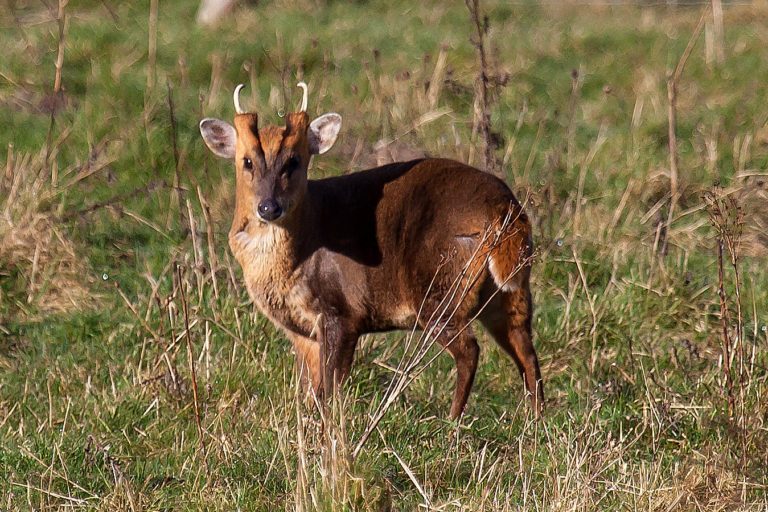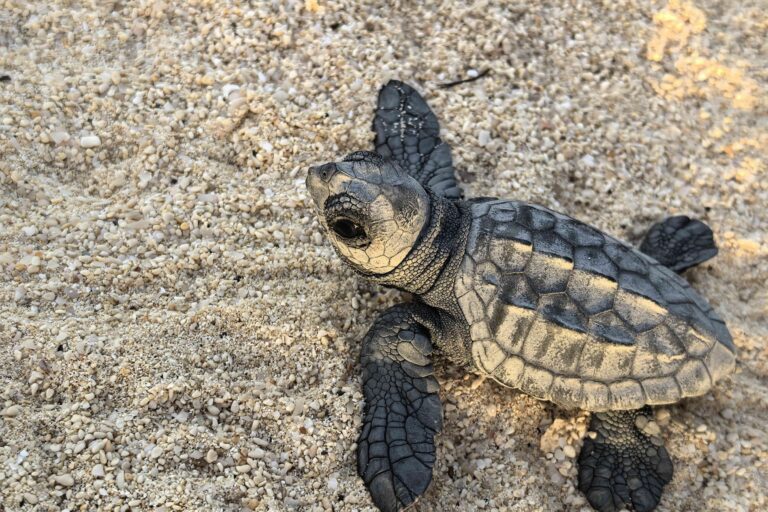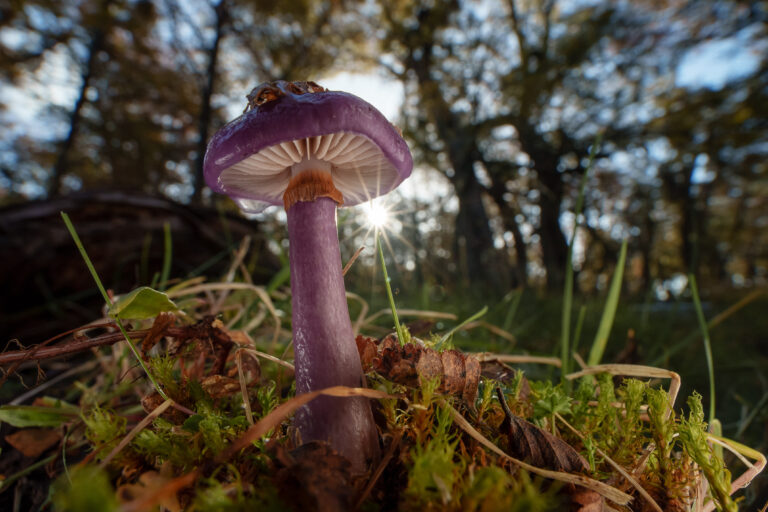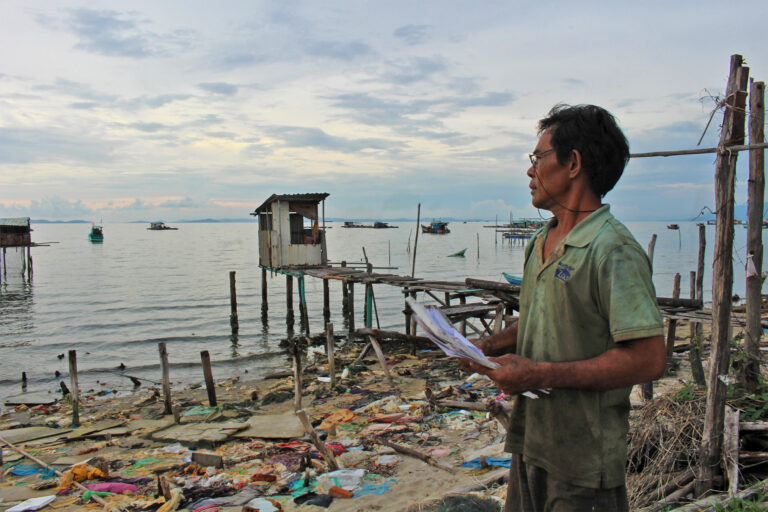- Researchers looking at the abundance of insect-eating birds in a pristine patch of forest deep in the Brazilian Amazon have seen populations of dozens of species decline over the past 35 years.
- The remoteness of the site and the still-intact tree cover rule out direct human activity as a factor for the population declines, with researchers attributing the phenomenon to the warmer and more intense droughts caused by climate change, which in turn puts stress on the birds and their food sources.
- The finding calls into question the idea that an area protected from human activity is sufficient to guarantee the conservation of its biodiversity.
- A similar phenomenon has been observed in the Caatinga shrubland ecosystem of northeastern Brazil, where rising temperatures, severe droughts, and irregular rainfall may lead to the extinction of birds and mammals over the next 60 years, even inside national parks.
Deep inside the Brazilian Amazon, in areas still inaccessible to the outside world, the wildlife follows its natural cycle. Their remoteness guarantees a certain degree of isolation from human civilization, helping to conserve the biodiversity. Some protected areas under Brazil’s National System of Conservation Units (SNUC), including national parks, biological reserves and ecological stations, host such islands of untouched wilderness. But their remoteness hasn’t spared them from the impacts of climate change.
That’s the finding from a recent study led by Philip Stouffer, a professor at the School of Renewable Natural Resources at Louisiana State University (LSU). Along with Ph.D. students Vitek Jirinec and Cameron Rutt and a group of other researchers, Stouffer documented a reduction in the populations of some bird species in the interior of a well-preserved fragment of Amazon rainforest north of Manaus, the capital of the Brazilian state of Amazonas, over the past 35 years.
The research is part of the Amazon Biodiversity Center’s Projeto Dinâmica Biológica de Fragmentos Florestais (PDBFF), which began in 1979 with the participation of renowned biologist and environmentalist Thomas Lovejoy. The main goal was to evaluate the importance of maintaining a large protected forest reserve or several small ones of equal size. The work began in the then-newly created agricultural district of the Manaus Free Trade Zone Superintendence (Suframa), an area north of the city with a large swath of preserved forest. At the time, it was expected the area would become fragmented over the years.
“In the early 1980s, Rob Bierregaard, then field director of the project, was sampling dozens of locations in the forest,” Stouffer said. “At that time, it was expected that much of the area would be deforested and these first samples would represent the starting point for examining ecosystem degradation after the isolation of the sites.” Stouffer and his team used the data generated by this long-running experiment, including surveys conducted in the 1990s, to compare to the current situation.
Stouffer, who has been conducting research in the Amazon since 1991, said the idea of looking at changes in the bird populations of still intact forest areas in the Suframa agricultural district emerged in 2008. According to him, the previous year there was intense work to study species in the same forest fragments sampled in the 1980s. “Based on the patterns we have seen developing, we were not surprised that the group of insect-eating birds which live close to the ground is very rare in these samples. They are species that we already knew would not do well in fragments or in secondary forest,” he said.
When the same work was carried out in untouched forest spots, the results came as a surprise. “After working for a few weeks with minimal success in finding these birds, we began to wonder if these species were really less common than when I first worked in the same locations in the early 1990s,” Stouffer said. This question motivated the team to make comparisons using data from more than three decades of research.

Methodology
After selecting the areas to run their study, Stouffer and his team set up extensive stretched mist nets, made with a fine mesh that’s almost imperceptible to birds and is designed to snag them. The objective was to capture the birds of the forest understory, the space within 2 meters (6 feet) of the forest floor. Larger birds like currasows were excluded from the survey. “From the data of the 1980s, we worked with those from 34 sites throughout the PDBFF area, extending 35 kilometers [22 miles] from one end to the other,” Stouffer said. “For the modern data, we worked with 21 sites in the same area, extending for 40 kilometers [25 miles]. We ended up with 79 species that we could analyze.”
The data comparison indicated that the birds that experienced the greatest population decline since the early 1980s are the terrestrial insect-eating ones and those that live close to the ground, such as the rufous-bellied antwren (Isleria guttata), the black-tailed leaftosser (Sclerurus caudacutus), the musician wren (Cyphorhinus arada), the wing-banded wren (Microcerculus bambla), the spot-winged antbird (Myrmelastes leucostigma) and the wing-banded antbird (Myrmornis torquata). Others species, however, had fared better over the same time period.
“I must also point out that some birds have increased their abundance since the 1980s.” Stouffer said. “They were mainly the ones that eat some fruits, but also the white-plumed antbird [Pithys albifrons], which uses some of the same food resources as the terrestrial insectivore birds, but has the advantage of following the army ants.”
These ants form armies of thousands that move across the forest floor, preying on everything they come across. The white-plumed antbird takes advantage of this to capture the insects that try to escape from the voracious predators. This behavior means that it has no fixed territory, and therefore has escaped the decline due to the fragmentation of the forest.
Of the 79 species of birds captured, the study indicated that 52 had seen their populations decline, while 24 saw an increase. Three remained stable.
Once the differences in bird species populations were identified, the next step was to try to explain them. The researchers discounted the possibility that the cause was the alteration of the landscape, given that the general area of the Suframa agricultural district still maintained almost the same forest cover as in the early 1980s (more than 90% of its territory). There was also no influence from edge effects (loss of vegetation or increased human activity on the outer perimeters of where the study was carried out), as the sample collections took place far from the forest edges. Other possibilities that were ruled out included invasion by generalist species and the occurrence of new pathogens or predators.
“This leads us to think that climate change is involved, but we don’t know exactly how,” Stouffer said.

What has changed in the forest
The researchers note that the dry season is warmer and drier in this part of the Amazon than it was in the 1980s. This change could be causing physical stress to the birds or reducing the areas with their favorite micro climate. The hypothesis that climate change influences the abundance of food resources for these animals is also a possibility.
Stouffer said the forest structure has changed due to climate change. In the study area, there is evidence of increased mortality of certain tree species and greater occurrence of others, indicating that conditions there favor faster-growing trees over slow-growing ones. “This can also be related,” Stouffer said.
He said the idea that climate change may be affecting wildlife in areas considered untouched suggests that we should question the assumption that vast areas of forest can retain biodiversity if they can be protected from disturbances such as deforestation caused by urbanization and the expansion of farmland. Stouffer, who said he’s now retired from field research in the Amazon, noted that this kind of long-term data, crucial to examining the problem, is rare. There’s also the difficulty of finding places undisturbed by humans where this type of research can be carried out, where the effects of human-driven landscape alteration can be ruled out.
Despite the worrying implications of the study’s discovery, Stouffer said it’s important to note that all the species whose population had declined occur in large areas throughout the Amazon.
“They are not in danger of extinction while there are many intact forests, but our data suggest that their populations are decreasing, which makes it crucially important to protect as much forest area as possible,” he said. This becomes even more urgent when considering that these birds do not tolerate small fragments of forest, and the regeneration of degraded areas takes more than 30 years to provide adequate habitat for them again.

Beyond the Amazon
The phenomenon detected by Stouffer and his team is not limited to the Amazon. In the Arctic, hungry polar bears have been recorded changing their migratory routes due to the thawing of their habitat. Elsewhere in Brazil, other studies are shining a light on the issue. Biologist Daiany Caroline Joner studied future projections of climate change impacts on the wildlife of integral protection conservation units in the Caatinga biome, a shrubland ecosystem, for her master’s and Ph.D. programs at the Federal University of Goiás (UFG).
Part of her research involved gathering data on the wild animals that inhabit 12 conservation units where direct exploitation of natural resources is prohibited and which have areas where only scientific research can be conducted. She has worked in Raso da Catarina Ecological Station, Seridó Ecological Station, Aiuaba Ecological Station, Castanhão Ecological Station, Serra da Capivara National Park, Chapada Diamantina National Park, Serra das Confusões National Park, and Seven Cities National Park, among others.
Based on global models for 2080 presented by the Intergovernmental Panel on Climate Change (IPCC), Joner projected that the already relatively dry northeast of Brazil will become increasingly arid, especially in the Caatinga biome, due to the increase in the average annual temperature, more irregular rainfall patterns throughout the year, and a greater occurrence of extreme events such as severe droughts and flooding. “The vegetation of this ecosystem will be affected. Furthermore, these areas will become progressively susceptible to desertification, even if only climatic variables are considered,” she said.
These climate-driven pressures will weigh on the many birds and mammals of places like Chapada Diamantina National Park in Bahia state and Catimbau National Park in Pernambuco state, Joner said. “When we think of a conservation unit, we believe that the species will be more protected within this geographical limit. However, when we think about the long term, another conservation approach needs to be considered,” she said.

Joner modeled two posible scenarios and how they would impact the birds and mammals of the Caatinga: one assumed they would be able to migrate to more habitable areas, and the other that they would not. “It seems surreal to think that a species cannot disperse, even birds. However, the favorable environments for survival are increasingly fragmented and smaller,” Joner said. Another problem is the paths between forest fragments can have countless barriers, such as roads, preventing the success of a possible displacement.
With the change in climate, many animals will lose adequate areas to live in. For Caatinga wildlife that also occur in the neighboring Cerrado grasslands, the impact may not be as severe, especially if migration is possible. But for species endemic to the Caatinga, the prospects are more severe.
These include the white-browed guan (Penelope jacucaca), a bird threatened with extinction, and the titi monkey (Callicebus barbarabrownae), a critically endangered monkey, Joner said. “Both species may lose all favorable climatic areas by 2080,” she added. Also facing the same threat is the iconic but endangered Lear’s macaw (Anodorhynchus leari), a bird that’s also highly coveted by wildlife traffickers.
The continued survival of these species will rely both on their ability to migrate and on the quality of the surrounding environment, including ecological corridors linking forest fragments, Joner said. She, Stouffer and other researchers are already working on the premise that the effects of climate change have put in check the idea that the isolation of wild animals in environments far from the direct action of humans is a guarantee of their survival. This, they argue, is an important issue to be aware of when creating public policies and developing projects for biodiversity conservation.
Banner image of a black-banded woodcreeper (Dendrocolaptes picumnus), by Philip Stouffer.
This article was first reported by Mongabay’s Brazil team and published here on our Brazil site on Dec. 7, 2020.






